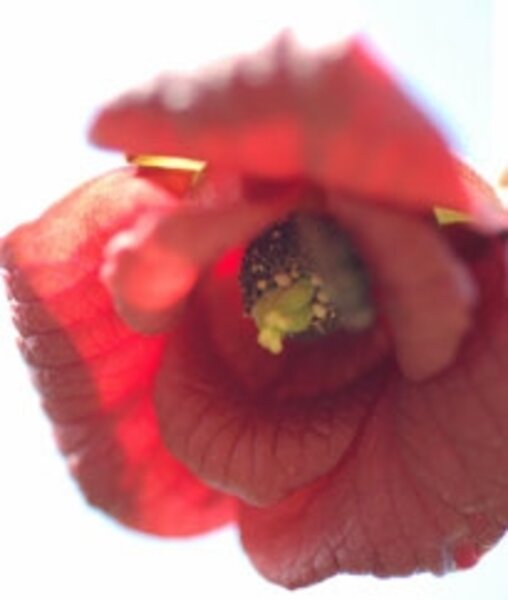America's forgotten fruit
Somewhere on an old Nike missile site in an undisclosed Chicago location, a tiny tropical-looking paw-paw tree is rising mysteriously out of the scrubby soil.
Credit its emergence to John Vukmirovich, the Johnny Appleseed of the pawpaw world – a self-proclaimed member of the “pawpaw conspiracy” (a type of pawpaw liberation front, if you will), a surreptitious sower extraordinaire of this country’s largest native fruit.
Never heard of it? That may change. Earlier this month Ohio declared the oval, green produce its “official state native fruit.” And proponents of local food, who eschew imported fruit, regularly declare the environmental and culinary virtues of the pawpaw.
The fruit is a taste-treat usually described in terms of custard, crème brûlée, mango, banana, vanilla, even pineapple. Or, simply, delicious.
“And there is a deliciousness in the secrecy of the pawpaw,” says Mr. Vukmirovich, a college teacher. “That’s the love of being in a conspiracy. You’re on the inside. You’re in the know.”
The forgotten pawpaw was first spread throughout the mid-Atlantic and westward by native Americans as a source of nutrition as the nomadic tribes pursued wild game, historians say.
The tree grows throughout a wide swath of the Midwest – which explains why it is sometimes called the “Indiana banana” and why some Michigan pioneers named their town Paw Paw for the trees that once grew along its river.
Pawpaws disappeared from the American consciousness around World War I. They weren’t really rediscovered until the mid-1970s, when a young geneticist named Neal Peterson picked one up off the ground and bit into it.
“It was very sweet – very, fruity, floral – very enticing. Kind of ethereal,” remembers Mr. Peterson, who now operates Peterson Pawpaws, a nursery in West Virginia. “It sparked my imagination, and I had to find out why this delicious fruit was not in grocery stores.”
It turned out that they don’t ship well. Pawpaws are at their most delicious when they are ripe and soft – and a tad ugly. There is little supermarket appeal for bruised, soggy fruit.
Adding to this, the tree’s flowers smell like rotting meat (some orchardists actually hang roadkill in the limbs to attract the pollinator – the blow fly) and the fact that the pawpaw seed is said to be poisonous makes it difficult to attract all but the most ardent of growers.
So if you are to hitch yourself to a steady supply, you must either find a knowing soul at a farmers’ market, or grow them yourself (they are quite attractive landscape trees, with their basset-hound-ear leaves, intriguing purple flowers, and lure of swallowtail butterflies).
At Kentucky State University, Kirk Pomper is leading an almost 20-year pawpaw research program intended to develop them as an alternative to tobacco production as the state looks for ways to wean its farmers off the lucrative crop.
He’s not just a scientist, he’s a fan. “Even though I see them all the time at work, I do have a few trees in my yard,” he admits.
Meanwhile, Vukmirovich continues his unconventional gospel by planting seeds on his walks throughout Chicago’s onetime, steelmaking southeast side.
Come springtime, he slips away from work and empties his pockets of seeds wherever the whim hits – sometimes where he rode bikes in the 1960s as a child, other times in swampy bogs, in forest preserves, or by a state conservation lake.
“Planting pawpaw seeds might be goofy or silly, but it’s really a value statement,” Vukmirovich says. “We need to create more than we consume. We need to reverse the process and green the world more.”
One pawpaw at a time.
More information on pawpaws:
Pawpaw trees, despite their many positive attributes, can be real sticklers to get started.
Because seedlings soon grow long, long taproots, they are next to impossible to transplant when established. Which means that when you buy a pawpaw tree, it will be tiny and taprootless.
So pawpaw planters must do everything in their power to avoid disturbing what little root their pawpaw has upon purchase.
Also, for the fruit to pollinate, you must plant two trees two different varieties of pawpaw. That not only gives you the pollination the fruit needs, but provides two different taste treats.
Where To Buy Pawpaws
Trees and seeds:
Peterson Pawpaws,
www.petersonpawpaws.com
Burnt Ridge Nursery,
www.burntridgenursery.com
John Gordon Nursery,
www.geocities.com/nuttreegordon/0Kgordon.htm
Hidden Springs Nursery,
www.hiddenspringsnursery.com
Pawpaw products:
Integration Acres sells fresh fruit, frozen
pulp, and pawpaw chutney,
www.integrationacres.com





